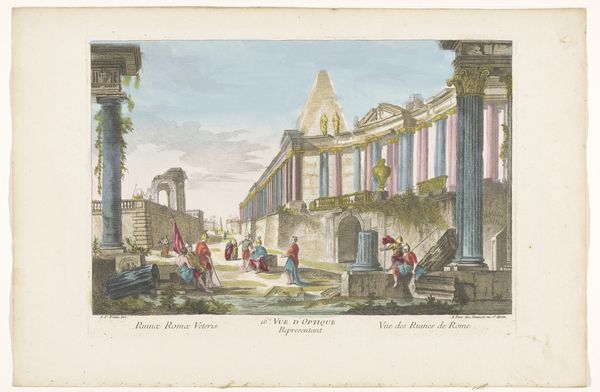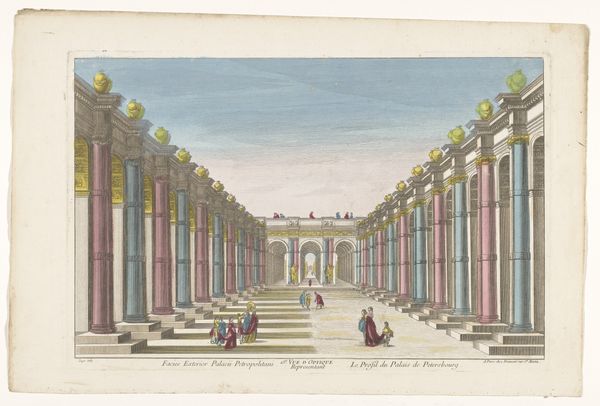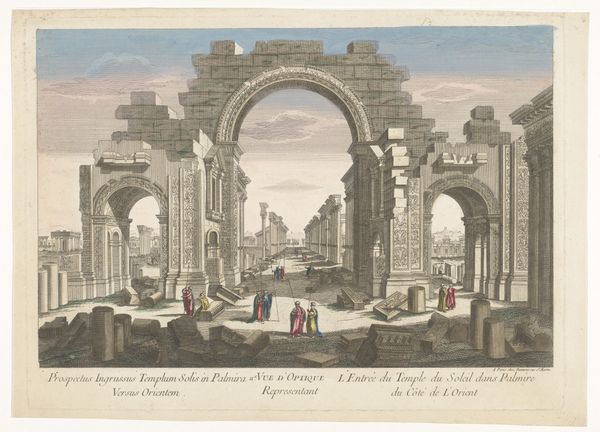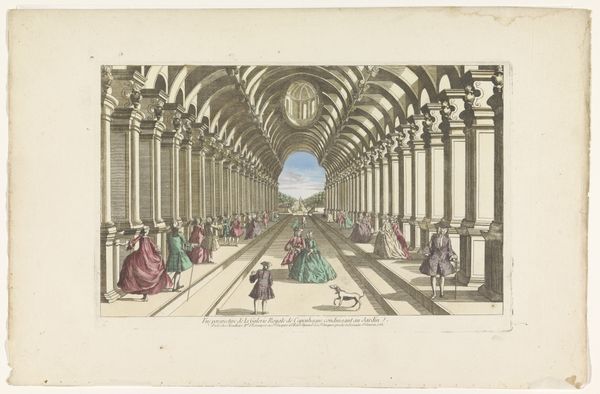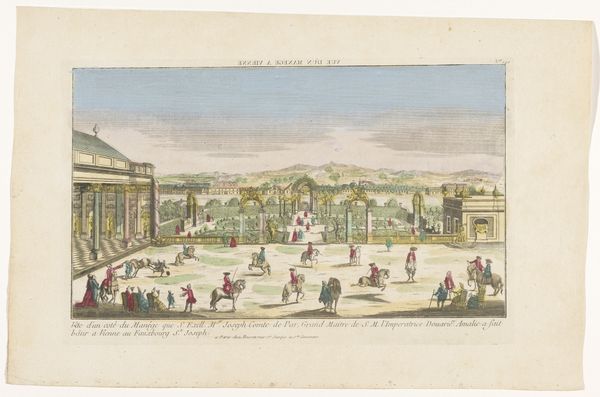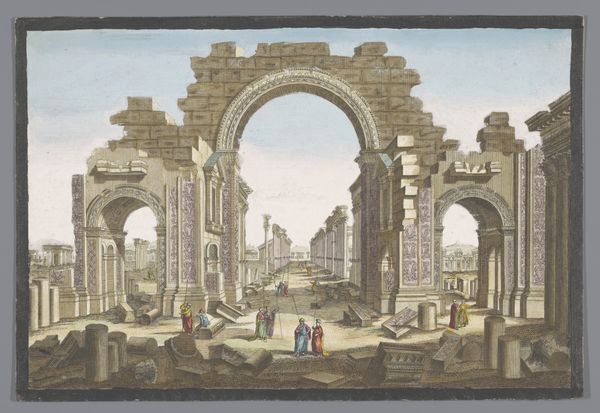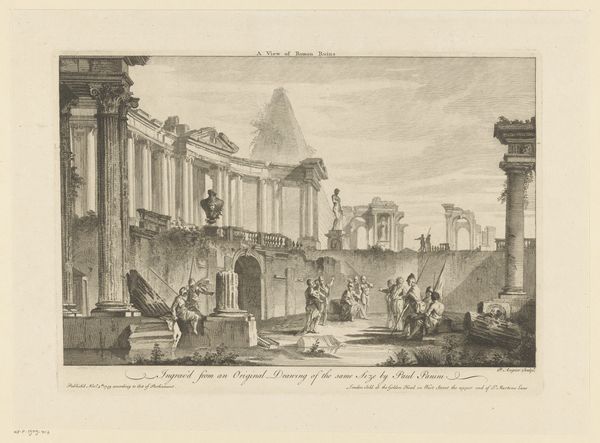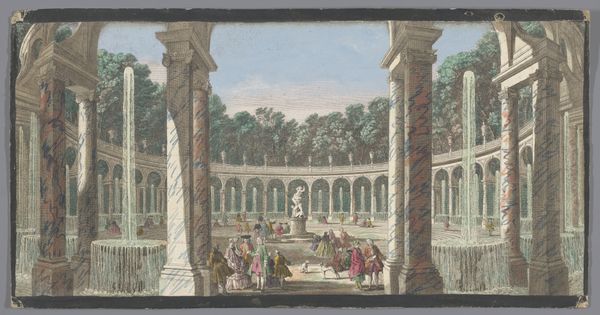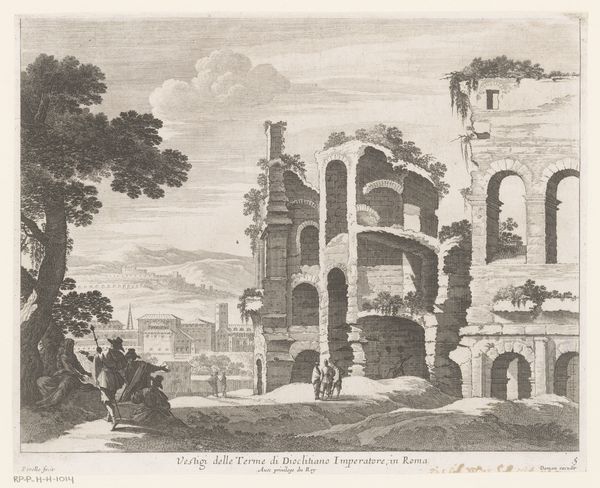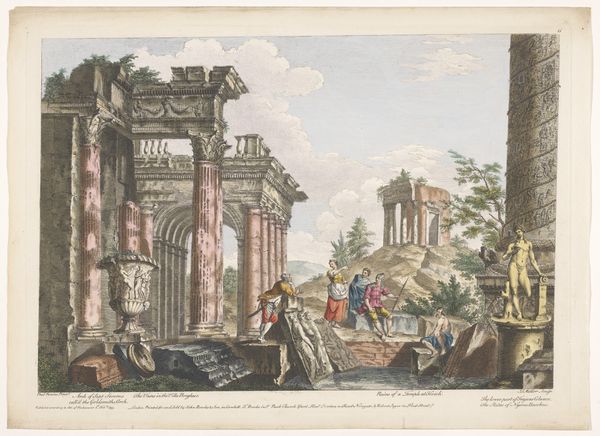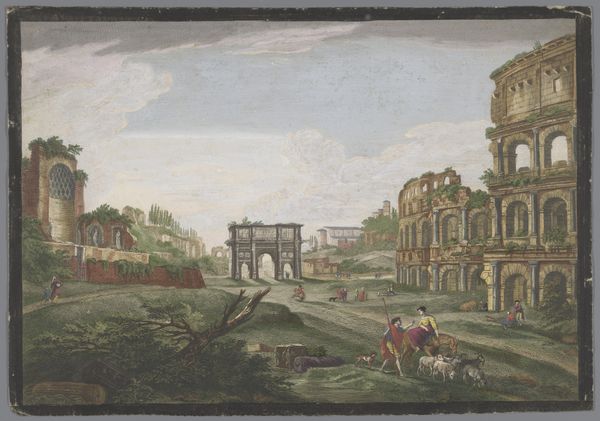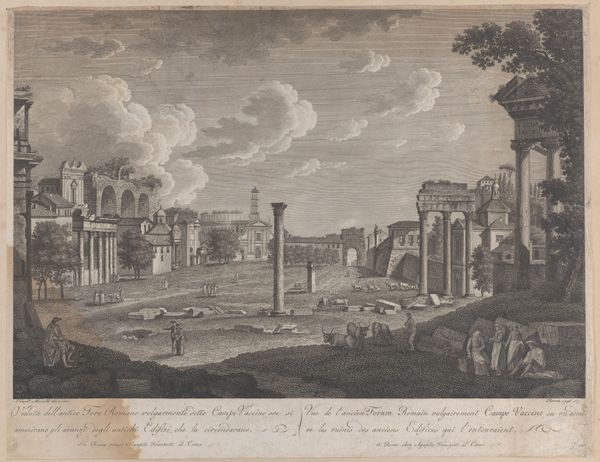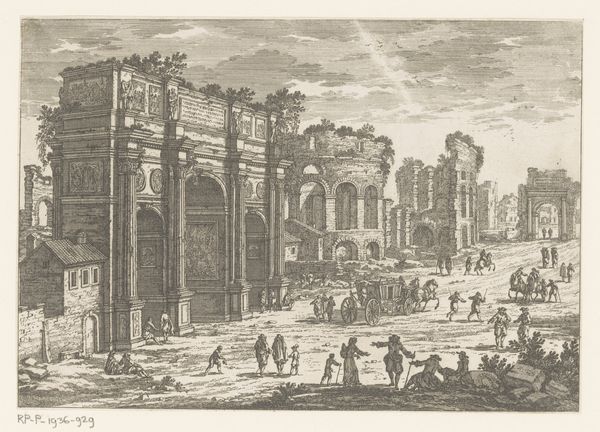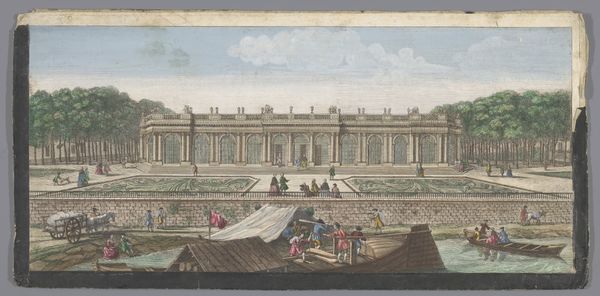
Gezicht op de ruïne van de Tempel van Minerva te Rome c. 1759 - 1796
0:00
0:00
Dimensions: height 282 mm, width 414 mm
Copyright: Rijks Museum: Open Domain
Curator: This delicate rendering depicts the ruins of the Temple of Minerva in Rome, attributed to Louis-Joseph Mondhare, dating from about 1759 to 1796. It seems to employ watercolor, pencil, and perhaps engraving techniques. Editor: A striking contrast! The grandeur of the architecture versus the everyday figures casually placed within the ruin feels almost defiant. A scene ripe with themes of power, decay, and human perseverance, wouldn’t you say? Curator: Precisely. Notice how Mondhare arranges the composition with careful attention to linear perspective, guiding the eye towards the distant structures, creating a profound sense of depth and order. It echoes a Neoclassical admiration for rational structure even amidst ruin. Editor: Yes, but the Romantic sensibility seeps in. Observe how the vibrant figures introduce a powerful element—an assertion of life within decay, of pleasure even amongst grand ruins. The temple symbolizes cultural legacies, sure, but legacies reshaped, re-appropriated by the people. What's interesting here is considering how power has shifted away from those who once occupied it and toward the communities now re-writing its use. Curator: While I acknowledge your reading of that dichotomy, I find the artist's handling of light equally compelling. Observe how it softens the harshness of the dilapidated stones, creating an elegant, balanced tonality across the entire composition. Editor: The subtle shifts in color are also striking. It gives the setting a very lived-in feel, a place teeming with the past, present, and perhaps an envisioned future, but to whose benefit is such continuity implied? Curator: A fascinating inquiry, I agree. The interplay between light and shadow alongside architectural precision creates a visual dialogue in itself. Editor: Absolutely. Looking closely allows a re-contextualizing of how art mediates power, ruin, and societal continuity. Thank you for sharing your analysis. Curator: It has been equally enlightening to consider your contextual and critical analysis.
Comments
No comments
Be the first to comment and join the conversation on the ultimate creative platform.
